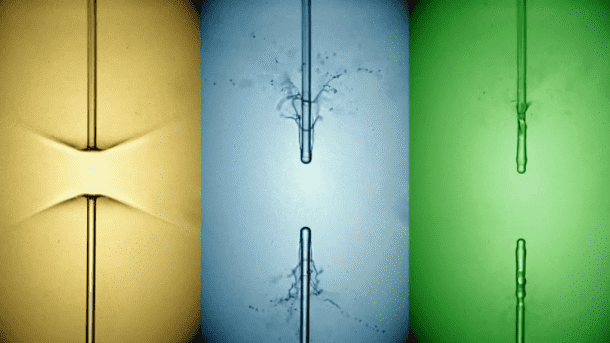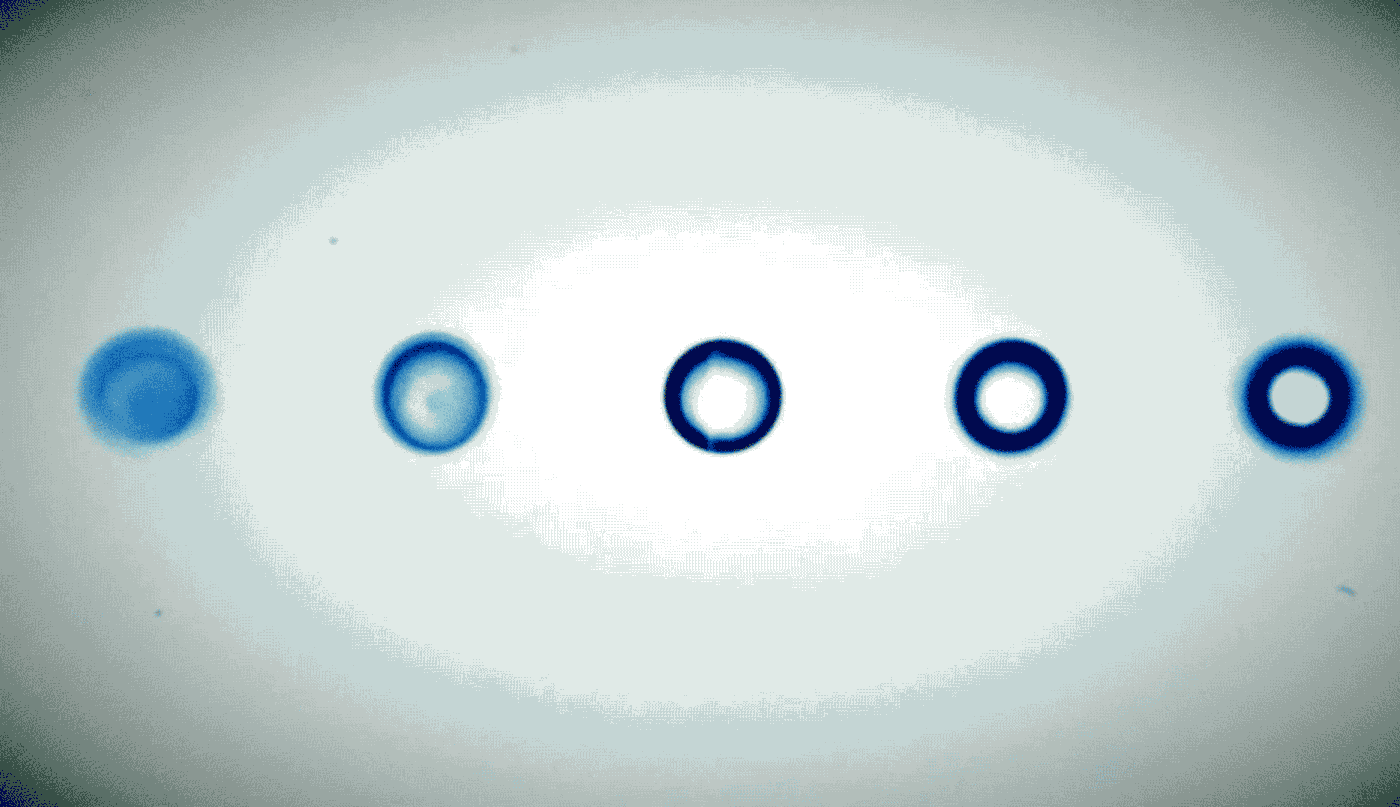For the first time, the scientists at the SLAC National Accelerator Laboratory, Department of Energy have captured the microscopic level footage of liquids as they are zapped by the world’s brightest X-ray laser.

The exceptionally bright X-ray lasers have been used to capture the atomic level snapshots of the fastest natural processes owing to their quick light flash. Claudiu Stan, from the Stanford PULSE Institute, explained the prospects of this experiment:
“Understanding the dynamics of these explosions will allow us to avoid their unwanted effects on samples. It could also help us find new ways of using explosions caused by X-rays to trigger changes in samples and study matter under extreme conditions. These studies could help us better understand a wide range of phenomena in X-ray science and other applications.”
When fully operational, these ultra bright X-rays can destroy the samples within a fraction of a second. Thanks to the high-end data acquisition technologies, the researchers can capture and record the necessary data before the sample has blown up.
The latest study, detailing the effect of X-ray lasers on the samples has been published in Nature Physics. The experimental study shows the microscopic details of the unstable contact as X-rays hit the sample. The study provides an insight into the X-ray laser experiments and how the reactions unfold.

The research examined two types of interactions between the X-ray lasers and the samples: First, the liquid samples interacted with the x-ray lasers as a series of drops. Second, a continuous jet of liquid is hit by the x-ray laser.
The team captured images timed at an incredible five billionths of a second to one ten-thousandth of a second after each pulse of the x-ray laser hit the liquid. The images were taken with the highly sensitive imaging system specifically developed for this purpose. The researchers took countless such snapshots which were then strung together to form a movie.
“Thanks to a special imaging system developed for this purpose, we were able to record these movies for the first time. We used an ultrafast optical laser like a strobe light to illuminate the explosion, and made images with a high-resolution microscope that is suitable for use in the vacuum chamber where the X-rays hit the samples.”
The video shows a drop of liquid being ripped apart by an X-ray laser, which is quite an incredible sight. A cloud of smaller droplets or particles is thereby generated which also includes vapors. The cloud grows bigger and damages other drops of liquids in its vicinity. The damaged drops, in turn, merge with more drops to generate new clouds.
On the other hand, the behavior depicted by the liquid jets as they get zapped by the x-ray laser is entirely different. A stream of oncoming fluid is punctured by the X-ray laser which punches a hole in its center. The hole continues to enlarge and results in the formation of a thin film of liquid on either side of the heel in the liquid jet. The film grows into an umbrella-like shape which ultimately merges with the jet.
The scientists used the data collected from these experiments to formulate some mathematical models to describe the varying behavior observed in the various experiments. The scientists were also able to speculate precisely about the challenges that will be encountered by the research teams at the European XFEL in Germany and LCLS-II, under construction at SLAC, due to the formation of these gaps in the jets. Both these x-ray lasers are expected to have a flare brighter and thousands of times faster than the present facilities.
Stan speculates about the future of LCL-II and hopes that the technological advancement will allow the researchers to benefit from the full potential of the LCL-II.
“The jets in our study took up to several millionths of a second to recover from each explosion, so if X-ray pulses come in faster than that, we may not be able to make use of every single pulse for an experiment. Fortunately, our data show that we can already tune the most commonly used jets in a way that they recover quickly, and there are ways to make them recover even faster. This will allow us to make use of LCLS-II’s full potential.”
The origin of the shock waves in the x-ray blast has also been captured in the footage.
The scientists are now designing experiments that would use the shockwaves of one x-ray laser to generate changes in the sample that will then be recorded by another x-ray laser. Therefore, the scientists could study the changes in matter that are taking place at tome scales shorter than those that we can study today.


